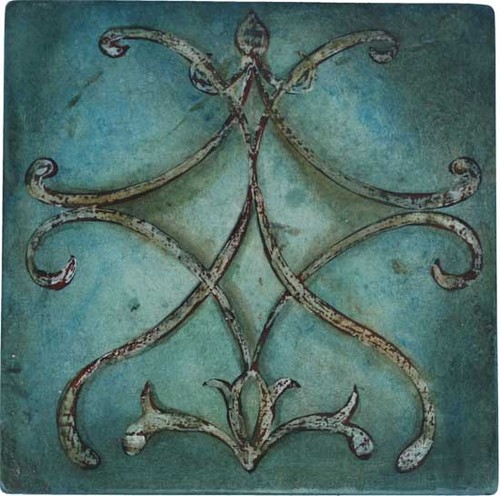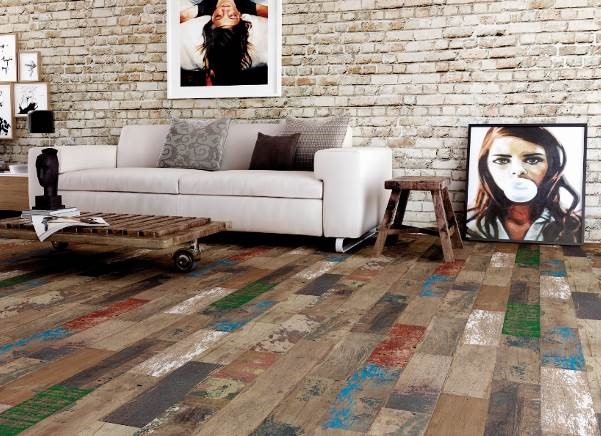Last week Artful Kitchens hit the road again for a mini-trip to my hometown, Miami. I was excited to re-connect with some of the great people I met earlier this year on my visit to the Cevisama tradeshow (if you missed that, you can read about it here) with Tile of Spain. I was not disappointed!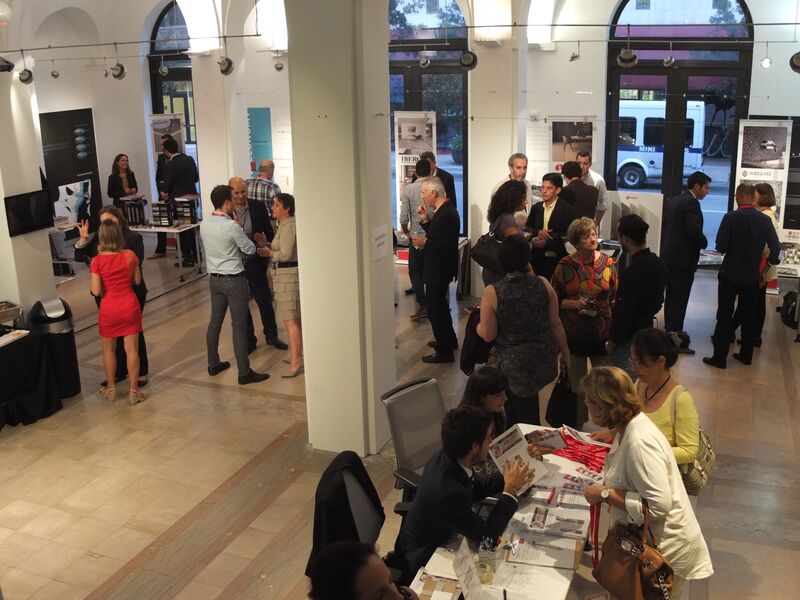 Ceramic Solutions-Innovations Pushing Boundaries of Design was held at the Miami Center for Architecture & Design, presented by Tile of Spain. Several of the big Spanish tile companies were also on hand showing their wares and I'm happy to report that their innovative products are readily available to us here in South Florida and other parts of the US.
Ceramic Solutions-Innovations Pushing Boundaries of Design was held at the Miami Center for Architecture & Design, presented by Tile of Spain. Several of the big Spanish tile companies were also on hand showing their wares and I'm happy to report that their innovative products are readily available to us here in South Florida and other parts of the US.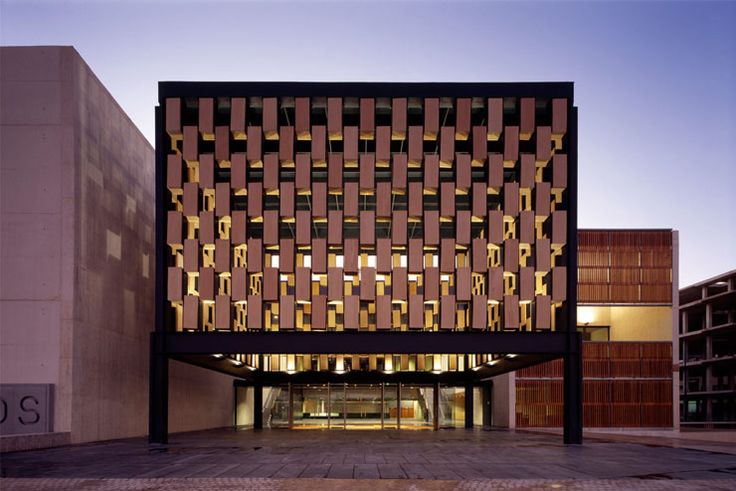 The big "takeaway" of the evening, besides seeing my peeps, was hearing Dr. Martin Bechthold, Professor, Harvard GSD, talk tile from a historical and architectural point of view. Clay has been used in the arts since ancient times and ceramic tile has a long history as a covering, or finish material. Now new technologies are utilizing ceramic tile architecturally and structurally!
The big "takeaway" of the evening, besides seeing my peeps, was hearing Dr. Martin Bechthold, Professor, Harvard GSD, talk tile from a historical and architectural point of view. Clay has been used in the arts since ancient times and ceramic tile has a long history as a covering, or finish material. Now new technologies are utilizing ceramic tile architecturally and structurally!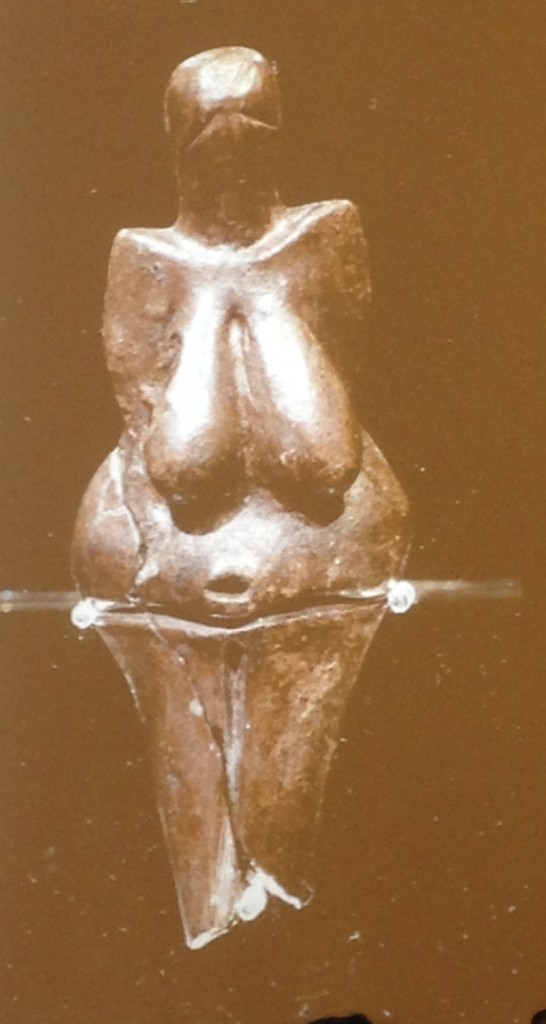 Next up was Tile of Spain Consultant Ryan Fasan who gave us an overview of the latest tile trends along with solid knowledge that is so useful in helping me to educate clients on the best products.
Next up was Tile of Spain Consultant Ryan Fasan who gave us an overview of the latest tile trends along with solid knowledge that is so useful in helping me to educate clients on the best products. 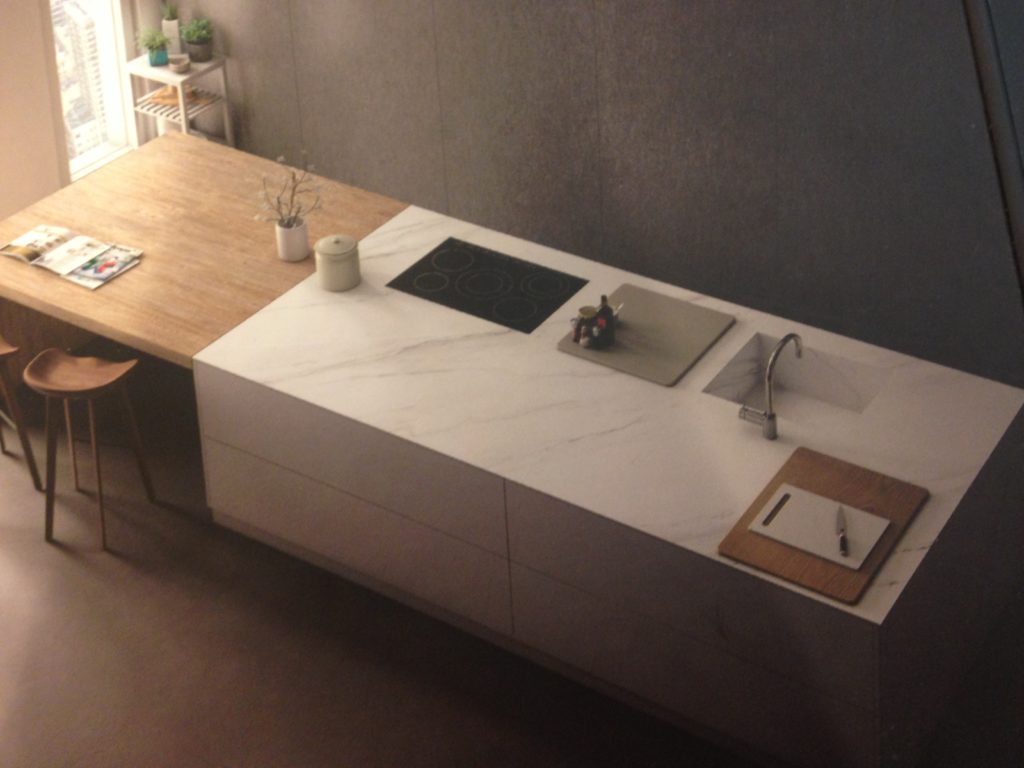 The sleek thin look of large format porcelain for counter tops is a current favorite of mine. Can you blame me? Consider it as an option if you're looking for a contemporary Euro vibe in your kitchen.
The sleek thin look of large format porcelain for counter tops is a current favorite of mine. Can you blame me? Consider it as an option if you're looking for a contemporary Euro vibe in your kitchen.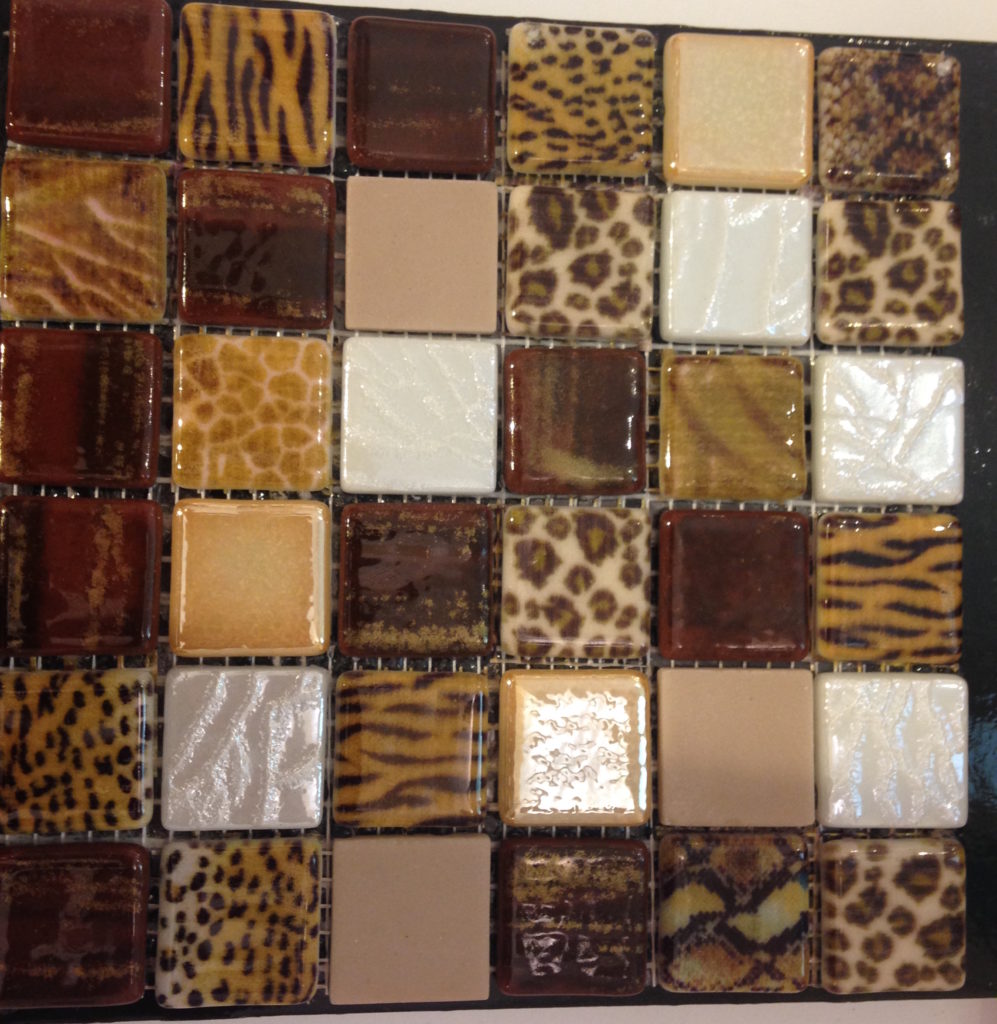 Breakthroughs in digital ink jet printing on tile allow for infinite possibilities. Tile can also be used to cool or heat your home due to their thermo dynamic properties.
Breakthroughs in digital ink jet printing on tile allow for infinite possibilities. Tile can also be used to cool or heat your home due to their thermo dynamic properties.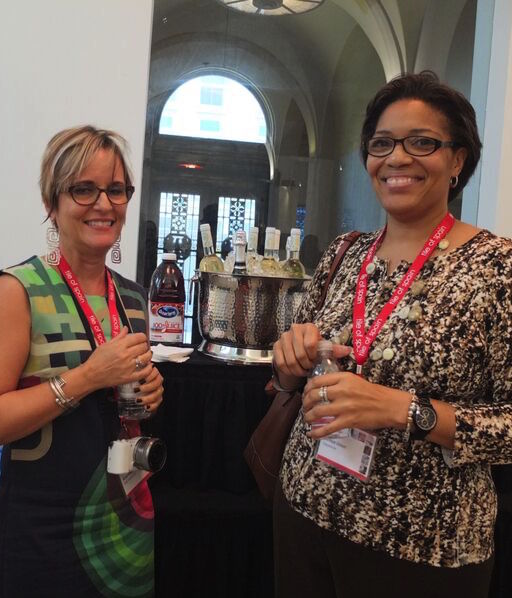 It's just like Tile of Spain to round out the experience with a literal taste of Spain! We enjoyed tapas, a traditional paella and Spanish wine.
It's just like Tile of Spain to round out the experience with a literal taste of Spain! We enjoyed tapas, a traditional paella and Spanish wine.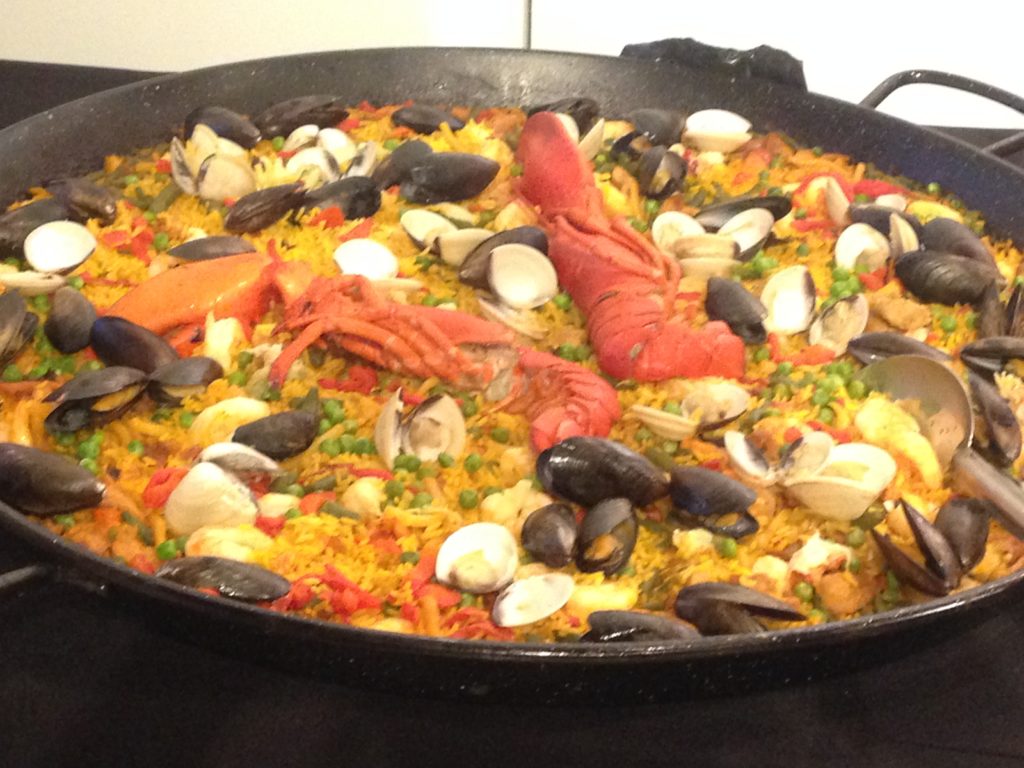 Tile of Spain is the international brand representing 125 ceramic tile manufacturers belonging to the Spanish Ceramic Tile Manufacturer's Association (ASCER).
Tile of Spain is the international brand representing 125 ceramic tile manufacturers belonging to the Spanish Ceramic Tile Manufacturer's Association (ASCER).
Tile Tuesday: In Valencia Art is a Way of Life
Welcome to today's installment of Tile Tuesday! The second half of my adventure with Tile of Spain took us to Valencia, location of Cevisama the annual trade show held to showcase the latest innovations introduced by the Spanish tile industry.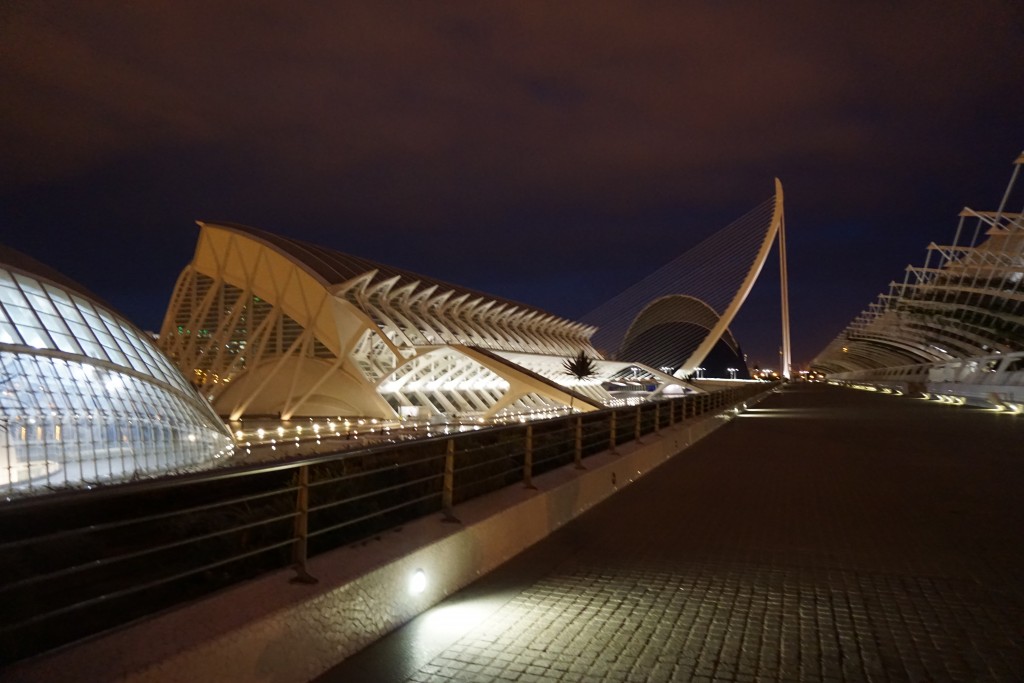 We traveled by train east from Sevilla to Valencia, which is situated on the coast about 300 miles south of Barcelona. At first glance Valencia appears to be very modern with a predominance of what I call “the new Spanish architecture” featuring waves, curves and a visually interesting asymmetry.
We traveled by train east from Sevilla to Valencia, which is situated on the coast about 300 miles south of Barcelona. At first glance Valencia appears to be very modern with a predominance of what I call “the new Spanish architecture” featuring waves, curves and a visually interesting asymmetry.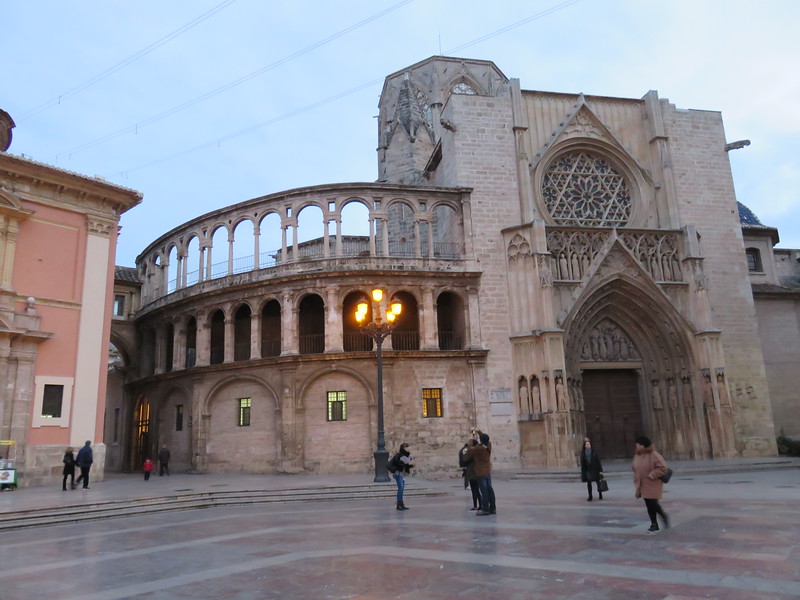 But there is an older Valencia to explore as well. The heart of the city features structures such as The “Iglesia de San Juan del Hospital” which dates back to the 1200s! The current city grew from this center. What a crazy combination of styles! You can see Roman, Gothic, Renaissance and more because different sections were constantly added to the original structure.
But there is an older Valencia to explore as well. The heart of the city features structures such as The “Iglesia de San Juan del Hospital” which dates back to the 1200s! The current city grew from this center. What a crazy combination of styles! You can see Roman, Gothic, Renaissance and more because different sections were constantly added to the original structure.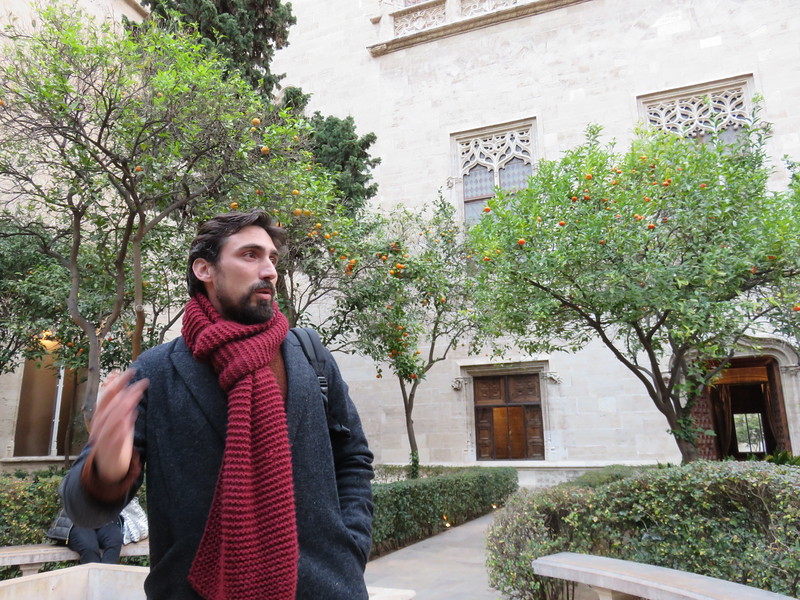 Again we had a passionate knowledgeable tour guide who did not allow us to leave one inch of Valencia uncovered!
Again we had a passionate knowledgeable tour guide who did not allow us to leave one inch of Valencia uncovered! 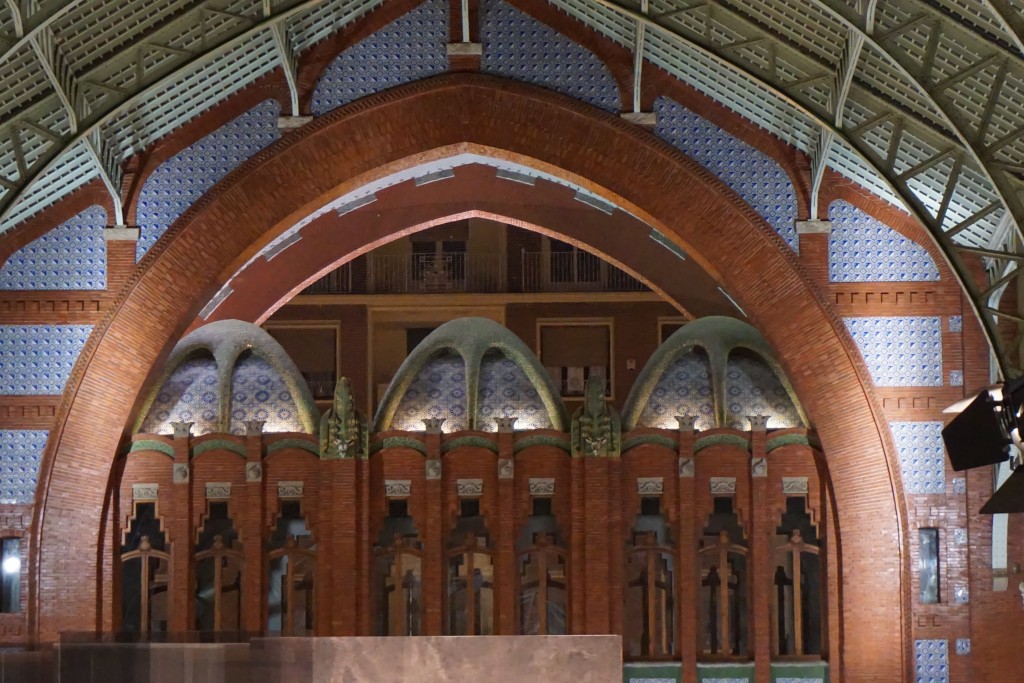 One of my favorite spots was the Mercado de Colón, a beautiful example of the Art Nouveau style. Glass and tile adorn this early twentieth century marketplace, now a gathering place full of interesting bars and restaurants.
One of my favorite spots was the Mercado de Colón, a beautiful example of the Art Nouveau style. Glass and tile adorn this early twentieth century marketplace, now a gathering place full of interesting bars and restaurants.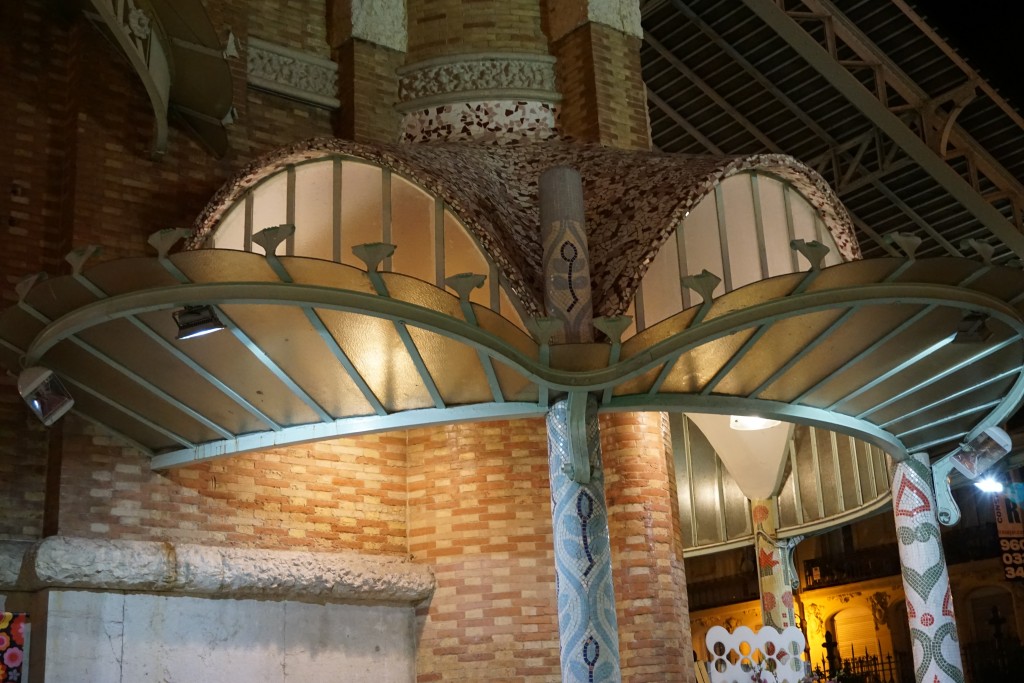 Hallmarks of the Art Nouveau style include free flowing organic shapes, rich earth tones and lots of tile! At the turn of the nineteenth century there was no aspect of living that was not touched by the movement. It was a global trend as well. In Germany it was known as Jugendstil, in Spain Arté Joven and Secession in Austria. The American version evolved into the what we know as the Arts and Crafts Movement, a simplified, more linear version. According to Art Nouveau philosophy, art should be a way of life. No wonder I'm always intrigued by it!
Hallmarks of the Art Nouveau style include free flowing organic shapes, rich earth tones and lots of tile! At the turn of the nineteenth century there was no aspect of living that was not touched by the movement. It was a global trend as well. In Germany it was known as Jugendstil, in Spain Arté Joven and Secession in Austria. The American version evolved into the what we know as the Arts and Crafts Movement, a simplified, more linear version. According to Art Nouveau philosophy, art should be a way of life. No wonder I'm always intrigued by it!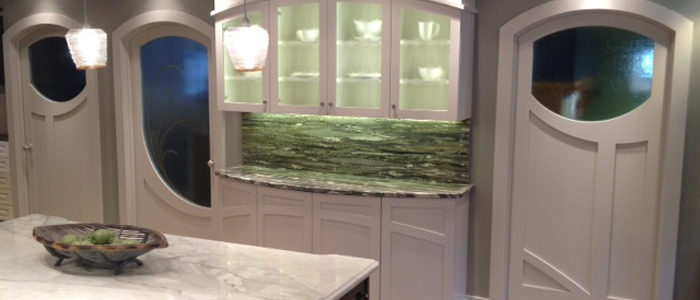 If you're looking to "Nouveau" your kitchen here are somethings you can include:-Rich brown wood stains-Green, green and green
If you're looking to "Nouveau" your kitchen here are somethings you can include:-Rich brown wood stains-Green, green and green
-Some curvy shapes (more affordable to do this with your counter top than with cabinets)-Oak wood floors or cabinets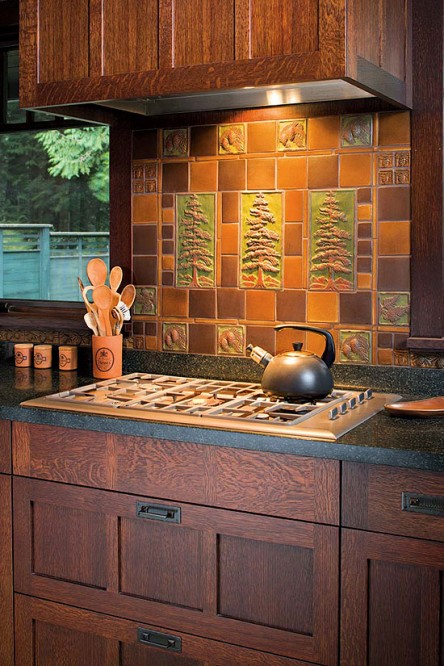 -Certain flora and fauna like the dragonfly, the ginko leaf and the thistle are all images often seen in Art Nouveau styling-Ceramic tile backsplashes (preferably with the above motifs)Next Tile Tuesday: More Cevisama and the future of tile.
-Certain flora and fauna like the dragonfly, the ginko leaf and the thistle are all images often seen in Art Nouveau styling-Ceramic tile backsplashes (preferably with the above motifs)Next Tile Tuesday: More Cevisama and the future of tile.
Tile Tuesday: Beauty & Knowledge
Welcome the the third installment of Tile Tuesday. If you missed the last two you can catch them here and here.The second half of my adventure with Tile of Spain took us to Valencia, the location of Cevisama, annual trade show held to showcase the latest innovations introduced by the Spanish tile industry.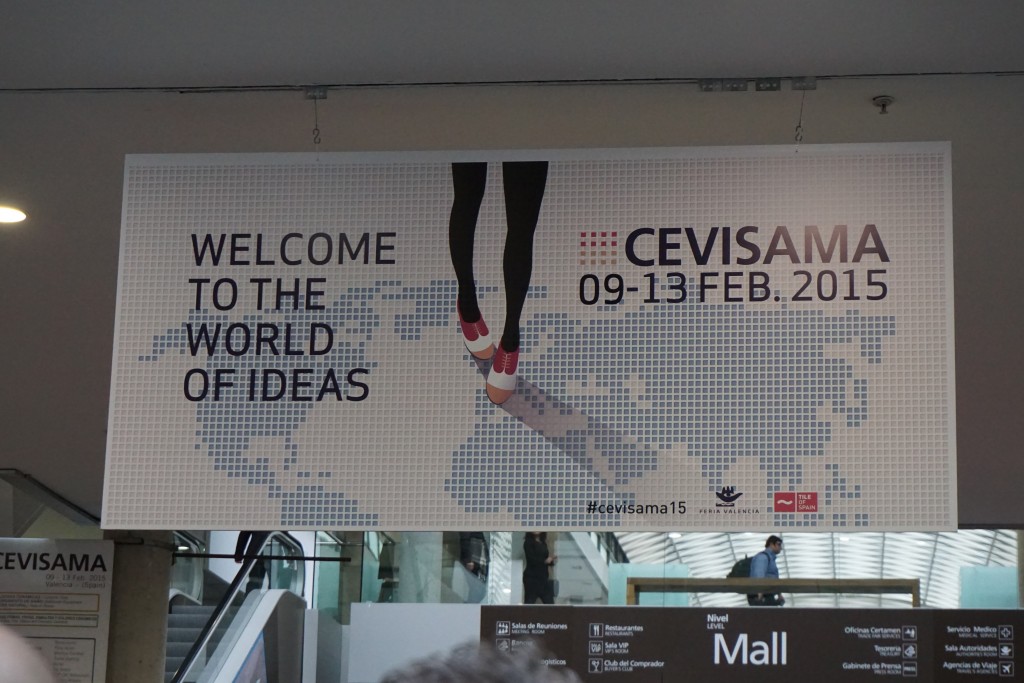 Attending Cevisama was an introduction to a whole world of possibilities! If you’ve been following Tile Tuesday, you already know that ceramic tile is a part of the Spanish culture dating back to Roman and Moorish times. Tile is nothing new but the uses and innovations in the ceramic industry certainly are! In the coming weeks we’ll talk about some of the big trends I saw that you can incorporate into your own kitchen.
Attending Cevisama was an introduction to a whole world of possibilities! If you’ve been following Tile Tuesday, you already know that ceramic tile is a part of the Spanish culture dating back to Roman and Moorish times. Tile is nothing new but the uses and innovations in the ceramic industry certainly are! In the coming weeks we’ll talk about some of the big trends I saw that you can incorporate into your own kitchen.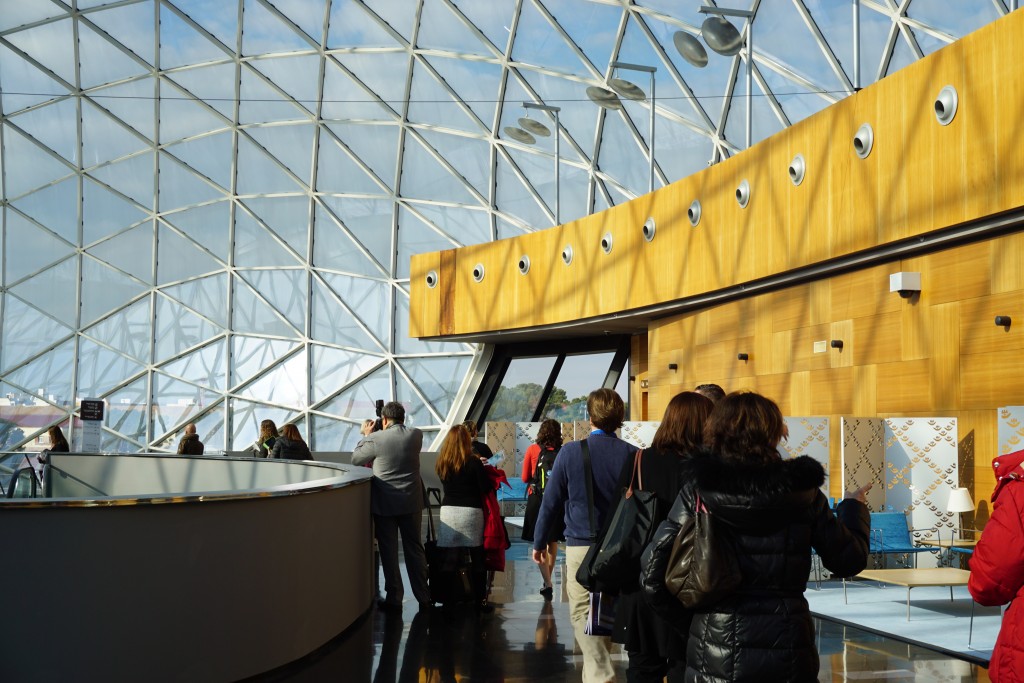 Before we do that let’s cover some good to know, sometimes misunderstood, facts about tile. For your viewing pleasure I have inserted a little eye candy to keep you on your toes!WHAT IS IT?Ceramic tile is a perfect balance of the classical elements of earth (clay), air, water and fire. All are involved in its creation. All tile is made of either red or white clay.
Before we do that let’s cover some good to know, sometimes misunderstood, facts about tile. For your viewing pleasure I have inserted a little eye candy to keep you on your toes!WHAT IS IT?Ceramic tile is a perfect balance of the classical elements of earth (clay), air, water and fire. All are involved in its creation. All tile is made of either red or white clay.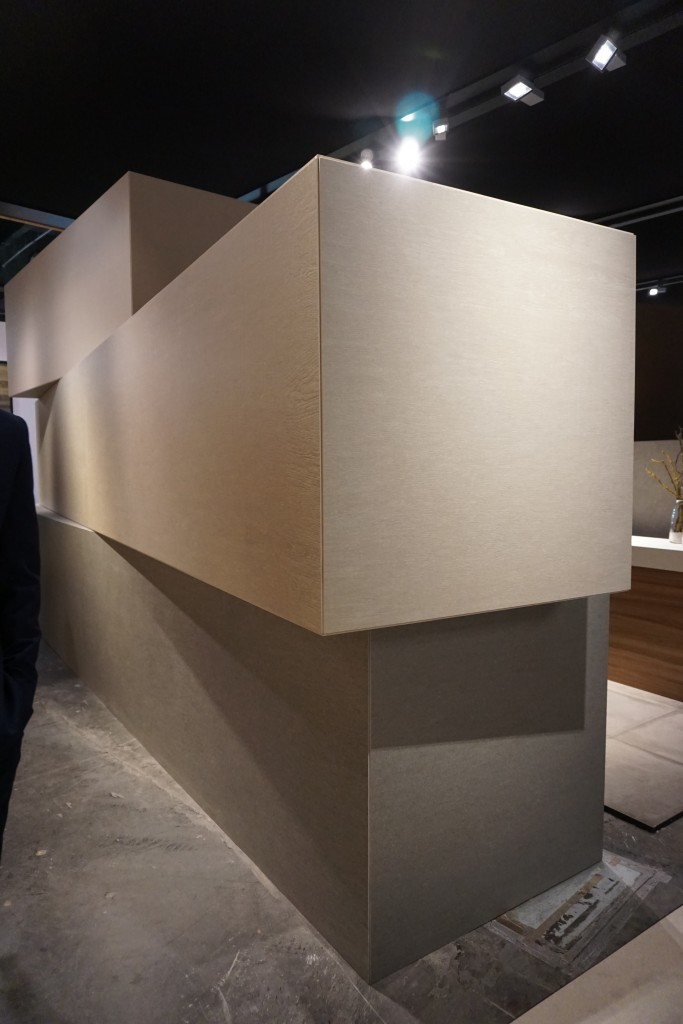 CERAMIC, PORCELAIN OR BOTH?One big question I get regards porcelain vs. ceramic. Guess what? Porcelain tiles ARE ceramic tiles. There is only one technical difference. A tile must have a water absorbtion rate of .05 to be classified as porcelain.
CERAMIC, PORCELAIN OR BOTH?One big question I get regards porcelain vs. ceramic. Guess what? Porcelain tiles ARE ceramic tiles. There is only one technical difference. A tile must have a water absorbtion rate of .05 to be classified as porcelain. 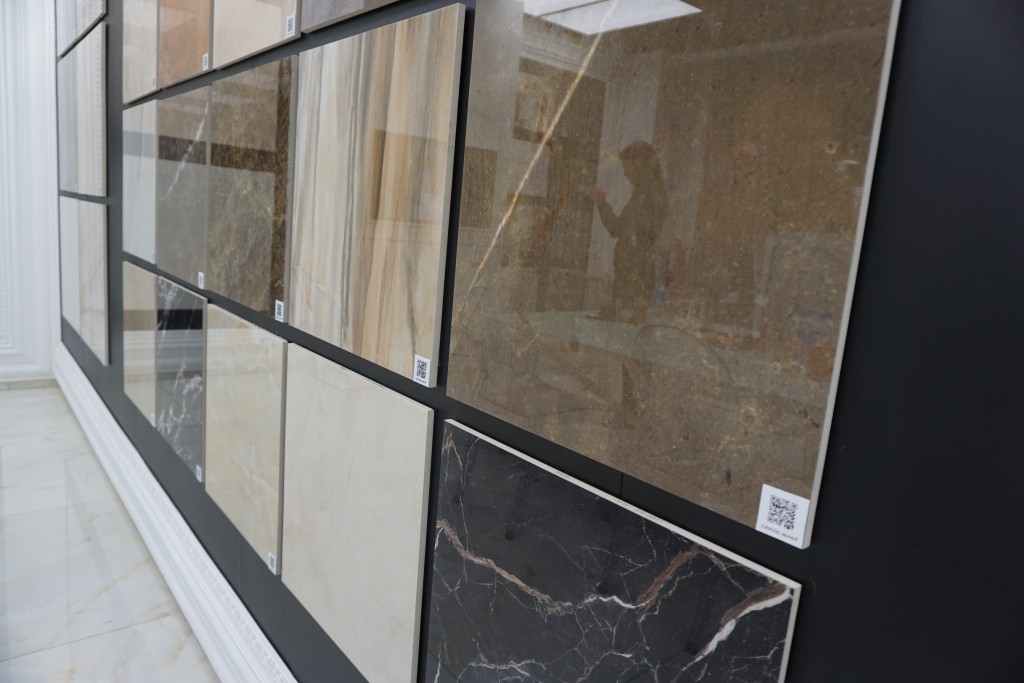 Typically porcelain tiles are denser, less porous and as a result more durable than other ceramics. You can also get them “rectified” which means crisp sharp perfectly squared edges that mean a tight fit with minimal grout lines.IS PORCELAIN THE SAME COLOR ALL THE WAY THROUGH?In the past I believed that a porcelain tile was the same color all the way through so that a small chip would be no big deal but I learned that is not always true. You CAN get something called “through-body porcelain” which means that if the tile is not glazed, the color and texture are consistent all the way through the tile. However porcelain tiles can also have surface glazes and textures that are not “through-body”.
Typically porcelain tiles are denser, less porous and as a result more durable than other ceramics. You can also get them “rectified” which means crisp sharp perfectly squared edges that mean a tight fit with minimal grout lines.IS PORCELAIN THE SAME COLOR ALL THE WAY THROUGH?In the past I believed that a porcelain tile was the same color all the way through so that a small chip would be no big deal but I learned that is not always true. You CAN get something called “through-body porcelain” which means that if the tile is not glazed, the color and texture are consistent all the way through the tile. However porcelain tiles can also have surface glazes and textures that are not “through-body”.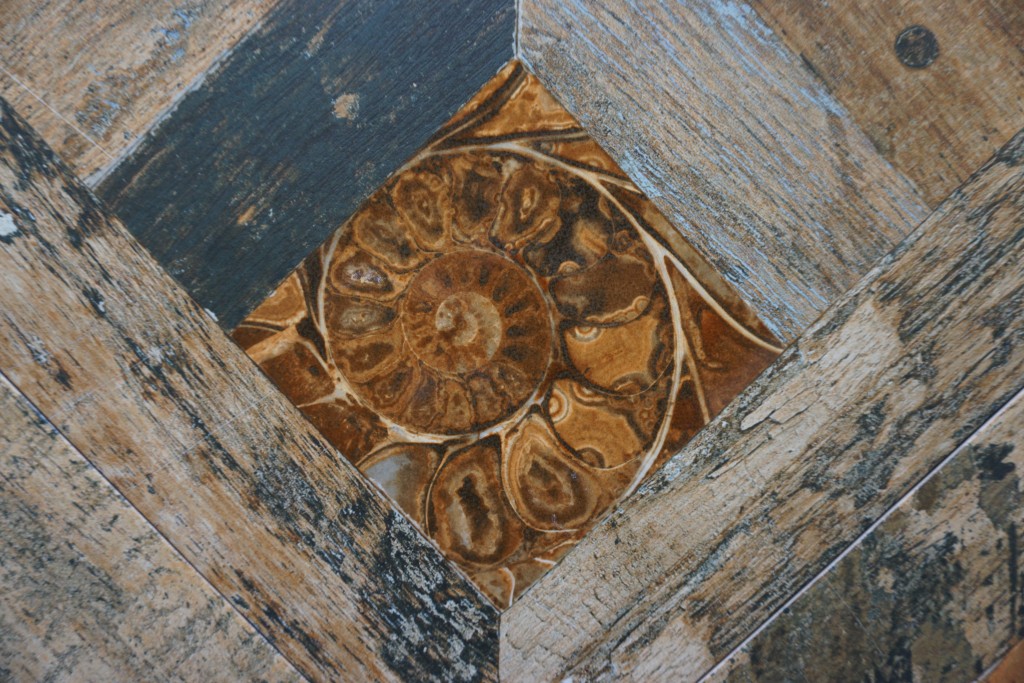 WHERE DOES IT GO?Tiles used for exterior applications are porcelain but not all porcelain tiles are recommended to be used outside. Generally you can put just about any type of tile on the wall but you’re much better off with porcelain on the floor for durability. Remember, although beautiful, glossy finishes are always more slippery than honed, or matte finishes. Got it? Good. Since you made it all the way to the end, I have a special treat for you.
WHERE DOES IT GO?Tiles used for exterior applications are porcelain but not all porcelain tiles are recommended to be used outside. Generally you can put just about any type of tile on the wall but you’re much better off with porcelain on the floor for durability. Remember, although beautiful, glossy finishes are always more slippery than honed, or matte finishes. Got it? Good. Since you made it all the way to the end, I have a special treat for you.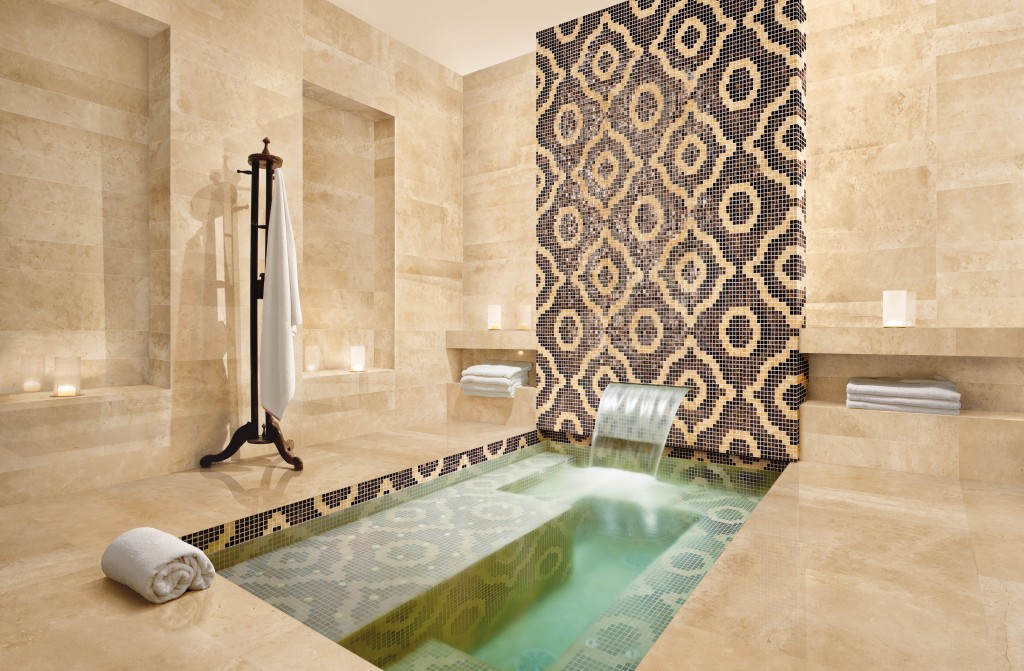 Next Tile Tuesday: Uncovering Valencia with Tile of Spain, perhaps another video slideshow??
Next Tile Tuesday: Uncovering Valencia with Tile of Spain, perhaps another video slideshow??
Tile Tuesday: Parente to Parasol, Old Tradition-New Expression
Welcome to the second installment of the Tile Tuesday series! If you missed part one you can find it right here. If there is one big takeaway from last week's post it is that there are two sides to Sevilla, the constant play between old and new.We were able to really dig in to both aspects on our Tile of Spain tour of Sevilla led by architect Gonzalo Cantos.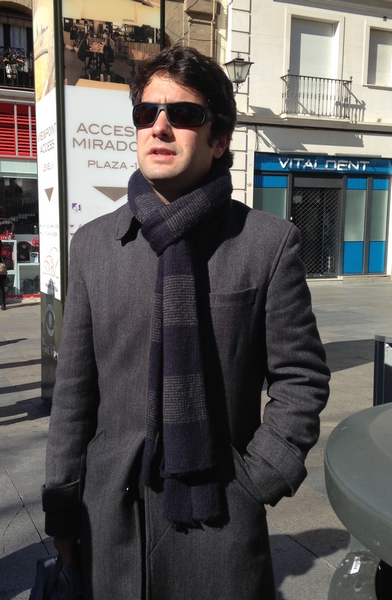 As we explored not only tile but the culture from which it originates, we were constantly presented with old and new, separate but not entirely mutually exclusive. What came before certainly influences the contemporary production.
As we explored not only tile but the culture from which it originates, we were constantly presented with old and new, separate but not entirely mutually exclusive. What came before certainly influences the contemporary production.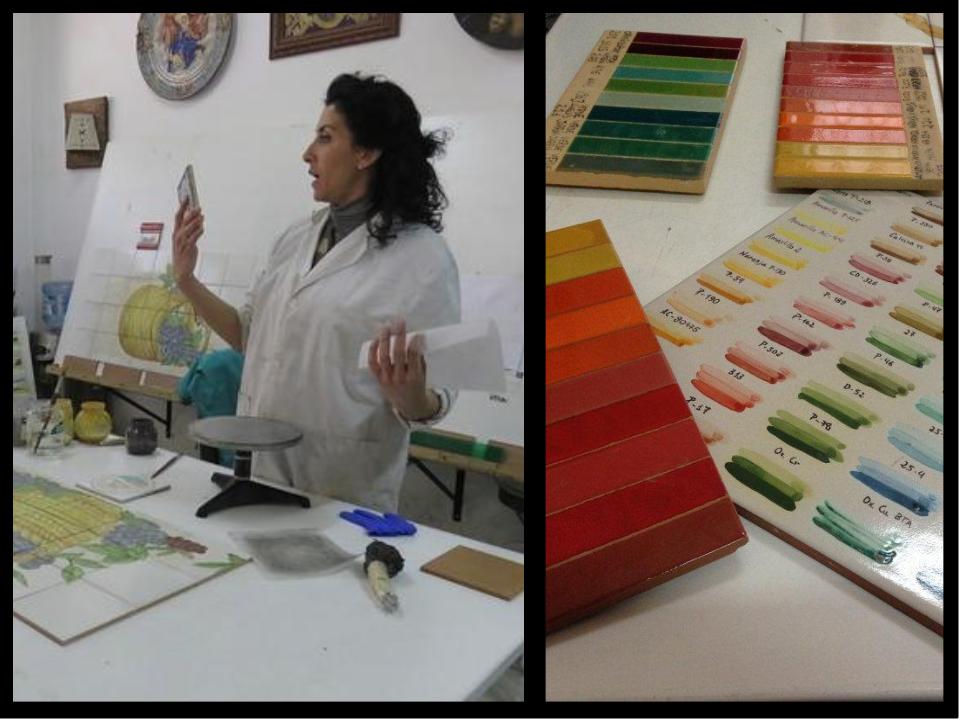 Later in the series we will take a look at modern state-of-the- art tile production in Spain but today I want to introduce you to a true old world style artisan, living and working in Sevilla. Meet Isabel Parente. We visited the studio where she creates her handmade tile and custom glazes. By the way, did you know that most ceramic glazes used today come from Spain?
Later in the series we will take a look at modern state-of-the- art tile production in Spain but today I want to introduce you to a true old world style artisan, living and working in Sevilla. Meet Isabel Parente. We visited the studio where she creates her handmade tile and custom glazes. By the way, did you know that most ceramic glazes used today come from Spain?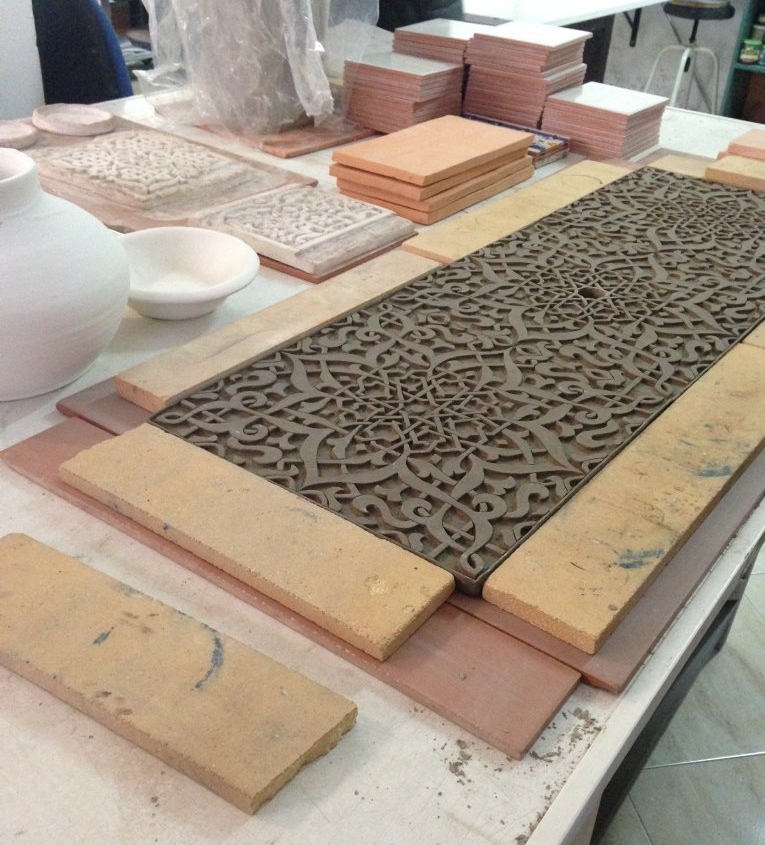 Isabel is mostly self-taught but briefly attended art school in Sevilla, followed by an internship in Perugia, Italy. She demonstrated a few different traditional methods including hand painting. Her practice includes the creation of new commissions as well as restoration.
Isabel is mostly self-taught but briefly attended art school in Sevilla, followed by an internship in Perugia, Italy. She demonstrated a few different traditional methods including hand painting. Her practice includes the creation of new commissions as well as restoration. It is interesting to note that with old world techniques (she doesn't even utilize a computer), Isabel is addressing the very current trend towards personalization. You can't get much more custom than what she does!
It is interesting to note that with old world techniques (she doesn't even utilize a computer), Isabel is addressing the very current trend towards personalization. You can't get much more custom than what she does!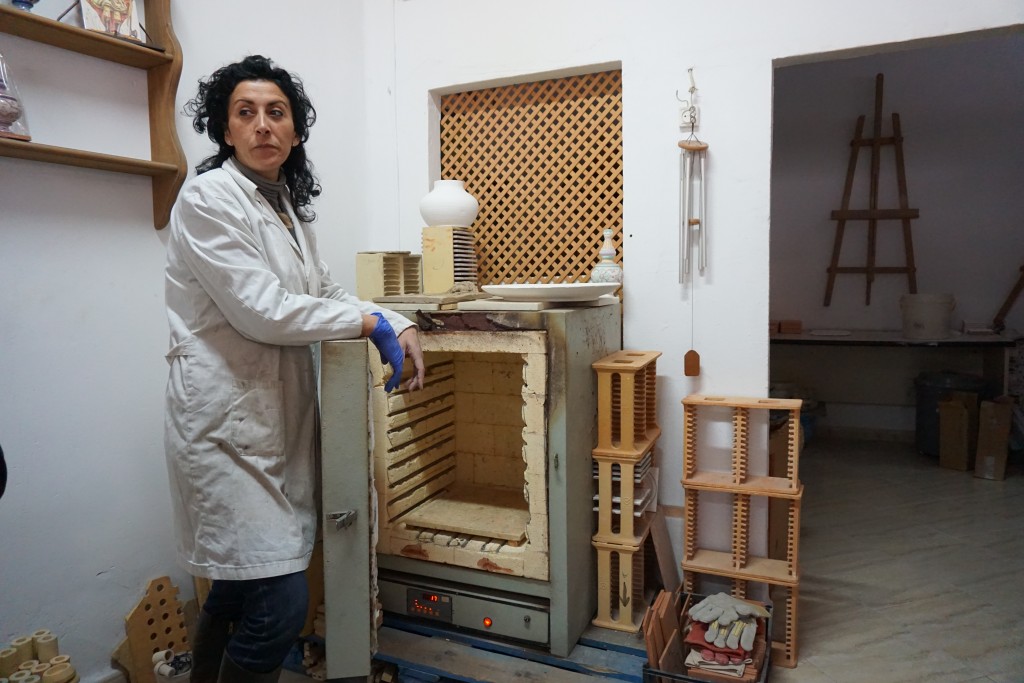 Just about a five minute walk from Isabel's studio you will find Encarnacion Square, the oldest part of Seville and home to one of its most controversial residents, Metropol Parasol. I posted our visit to Parasol in real-time. If you were one of those who wondered exactly what this was, today's your lucky day.
Just about a five minute walk from Isabel's studio you will find Encarnacion Square, the oldest part of Seville and home to one of its most controversial residents, Metropol Parasol. I posted our visit to Parasol in real-time. If you were one of those who wondered exactly what this was, today's your lucky day. 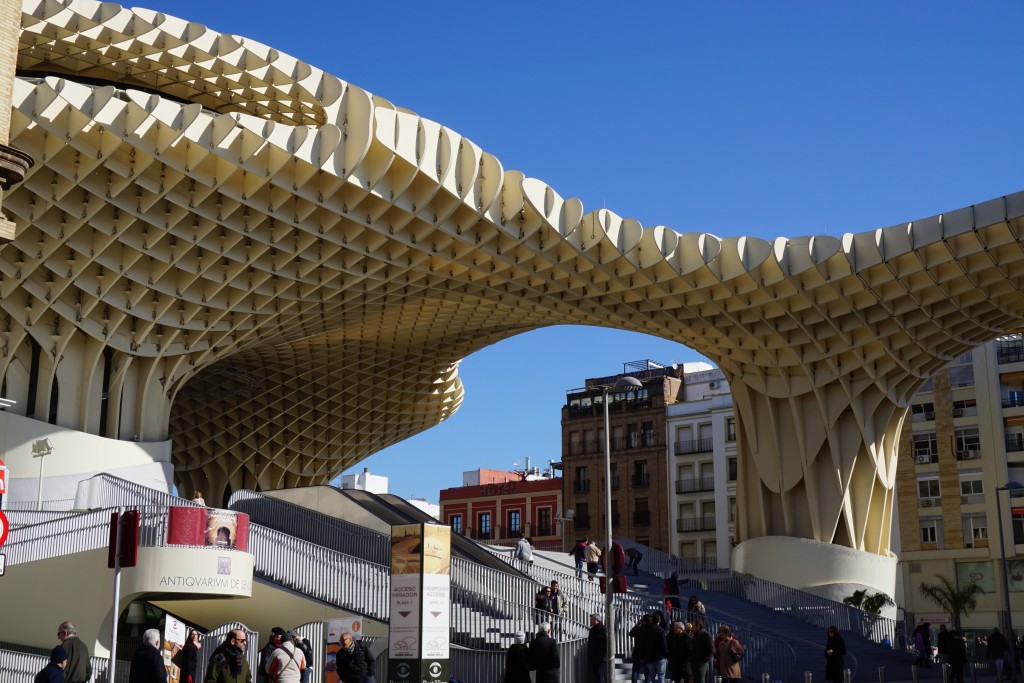 Encarnacion Square was home to a neighborhood market starting in the 19th century up until the 1970s when the area began to languish. Excavation to create a parking lot in the 1990s uncovered ancient Roman ruins below!
Encarnacion Square was home to a neighborhood market starting in the 19th century up until the 1970s when the area began to languish. Excavation to create a parking lot in the 1990s uncovered ancient Roman ruins below! 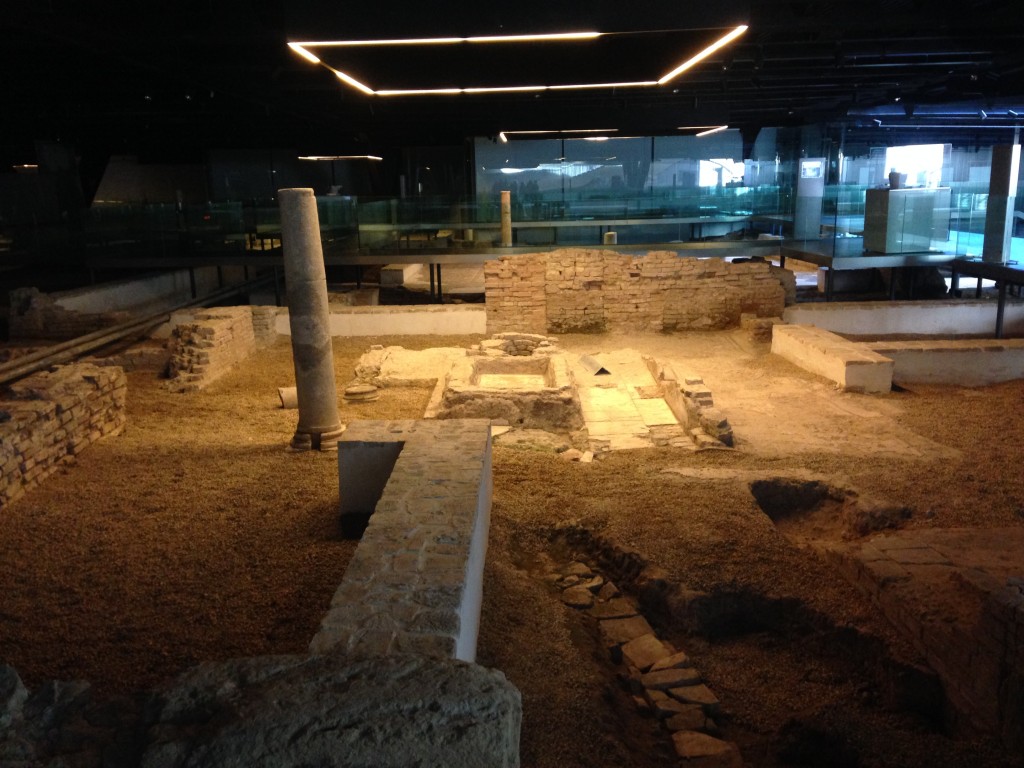 It wasn't until 2004 that the city decided to develop the property. Architect Jurgen Mayer-Hermann was selected and his Metropol Parasol was completed in 2011 at approximately double the 50 million Euro budgeted for the project. Part of the expense was due to technical flaws in his design that had to be overcome. This paired with the fact that its unexpected dramatic presence rubs "traditionalists" the wrong way, is what makes the Parasol a continuing subject of controversy.
It wasn't until 2004 that the city decided to develop the property. Architect Jurgen Mayer-Hermann was selected and his Metropol Parasol was completed in 2011 at approximately double the 50 million Euro budgeted for the project. Part of the expense was due to technical flaws in his design that had to be overcome. This paired with the fact that its unexpected dramatic presence rubs "traditionalists" the wrong way, is what makes the Parasol a continuing subject of controversy. 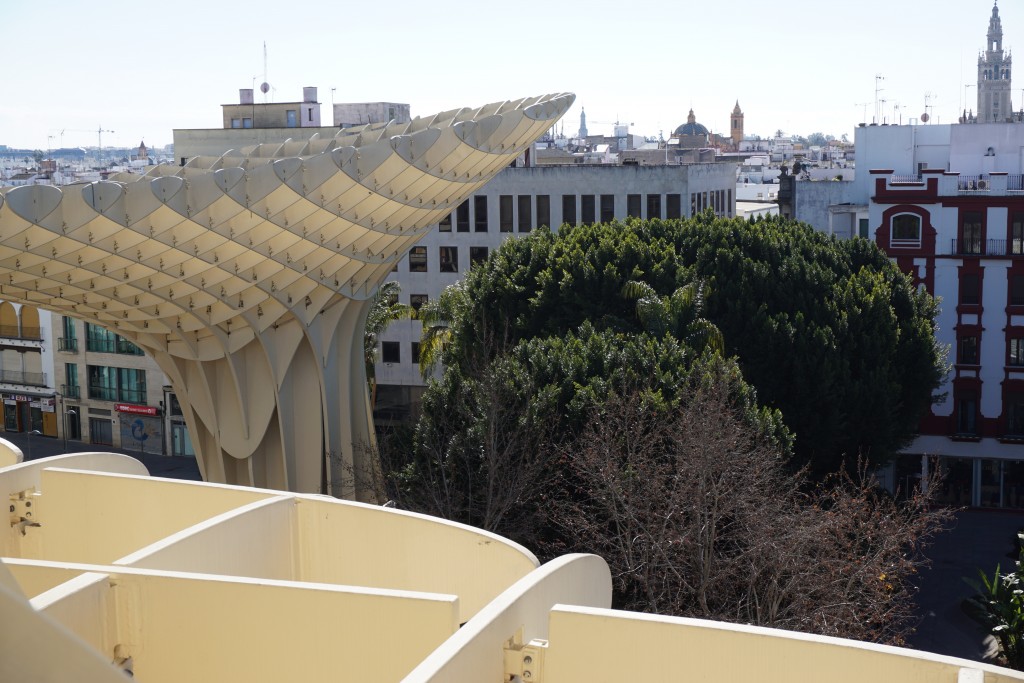 Here's
Here's my another perspective. Mayer-Hermann's inspiration came from the cathedral vaults of nearby Seville cathedral as well as from the large shade producing ficus trees of a neighboring park. In fact shade from the sweltering summer sun was one of his major objectives. In this way it does reference its location quite well. The project is an excellent example of the modern Spanish architecture of undulating curves and waves. Sevillanos refer to it as "Las Setas"(The Mushrooms). Giant "waffles" are made of birch hardwood with a polyurethane finish. 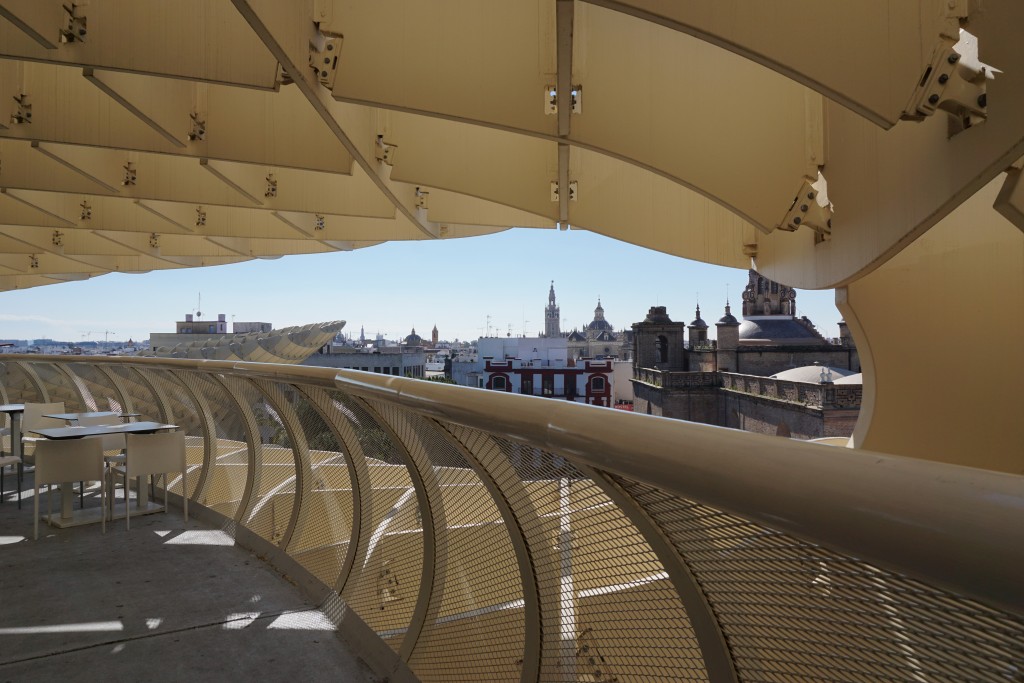 The excavation and restoration of the ruins below continue. On level zero you will find an Antiquarium where you can walk among old Roman buildings. The Parasol above is wholly supported on 8 points so as not to disturb the ruins below. On level one there is, once again, a market. The upper levels house restaurants and a meandering walkway offering various views of the city below.I will say that because of the design of the structure, I felt safely embraced on these walkways, sort of nice if you have a fear of heights!
The excavation and restoration of the ruins below continue. On level zero you will find an Antiquarium where you can walk among old Roman buildings. The Parasol above is wholly supported on 8 points so as not to disturb the ruins below. On level one there is, once again, a market. The upper levels house restaurants and a meandering walkway offering various views of the city below.I will say that because of the design of the structure, I felt safely embraced on these walkways, sort of nice if you have a fear of heights!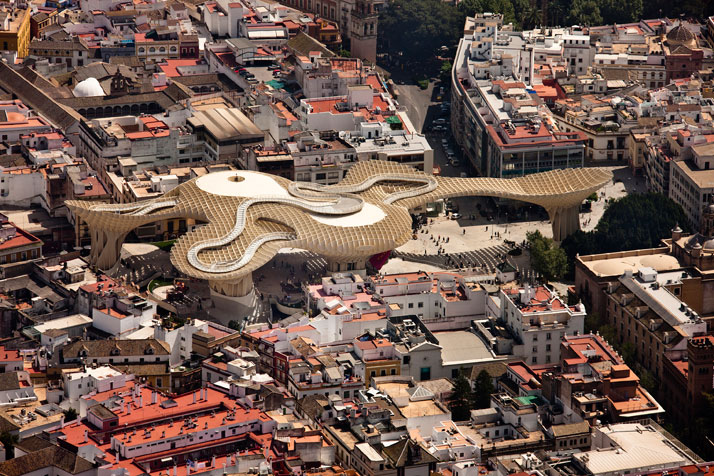 So what's your take? Ugly intrusion or a dramatic blending of old and new concepts exemplifying the new Spanish architecture?Before we leave Seville I want to share my pics with you. In addition to what I have written about here, and in part one, photos include: Plaza de España, Alfonso XIII Hotel, Royal Alcazar of Seville and Seville Cathedral. Now go grab some sangria, kick back and enjoy the sights.Next Tile Tuesday: On to Valencia and what I learned about tile and trends I saw at Cevisama 2015
So what's your take? Ugly intrusion or a dramatic blending of old and new concepts exemplifying the new Spanish architecture?Before we leave Seville I want to share my pics with you. In addition to what I have written about here, and in part one, photos include: Plaza de España, Alfonso XIII Hotel, Royal Alcazar of Seville and Seville Cathedral. Now go grab some sangria, kick back and enjoy the sights.Next Tile Tuesday: On to Valencia and what I learned about tile and trends I saw at Cevisama 2015
Spanish Style 2015
As you are reading this I'm probably winging my way across the Atlantic, heading to the Passport to Creativity 2015 event courtesy of Tile of Spain. We will be exploring Seville and then on to Valencia to attend Cevisama, Spain's international tile trade fair showcasing the latest in tile products and design trends. Follow me on FaceBook, Instagram and Twitter for live reports and I'll be recapping all right here upon my return. For now, here's a sneak preview of some of what we'll be seeing (just to get you in the mood).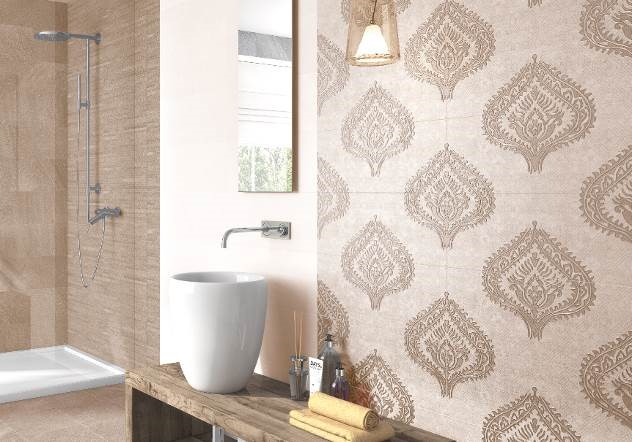
Color palettes include monochromatic color schemes where one hue is carried throughout with subtle changes in texture and pattern. This is a great way to tie a room together creating a harmonious whole. Looks like "greige" strikes again here!
But if you're not so subtle there are lots of bright color choices too! I'm loving the originality, not to mention the forgiving nature of this new porcelain tile! Organically inspired tile is taking a cue from nature for a very authentic wood look. In addition, there are lots of choices for mosaics. The point is all the elements are there for you to make a unique and very personal statement with tile.
Click here for more info about Tile of Spain and where you can get the latest tile.

